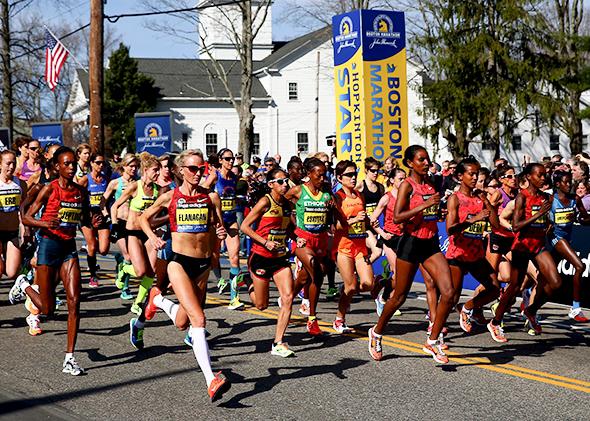Help Slate build a better running calculator by filling out a short survey. In the article below, Christie Aschwanden explains why existing calculators are flawed, and how you can help create a better one.
Before lining up for a race, every runner asks herself the same question: When am I going to cross the finish line? For first-time marathoners (or first-time 10K or half-marathon competitors) this usually means plugging some numbers into a finish-time prediction calculator. Unfortunately, the numbers these calculators spit out are guesstimates at best, frequently missing the mark by miles. Andrew Vickers, a statistician at Memorial Sloan Kettering Cancer Center who’s also a competitive runner, thinks he can build a new kind of calculator, one that will do a better job predicting finishing times for amateurs and pros like. But he needs your help.
Most finish-time calculators, like this example from Runner’s World, use a formula like the one developed in the 1980s by engineer and marathoner Peter Riegel. It’s a simple algorithm, one that takes your time for a race you’ve already finished and adjusts it up or down by factoring in an assumed slowdown rate when moving from shorter to longer races.
Vickers sees several problems with the Riegel approach. First, it assumes that the relationship between your pace in a 100-meter sprint and a 5K is the same as the ratio between your speed in a mile run and a marathon. Yet we know that natural sprinters will perform relatively better in short races than in longer ones, and vice versa.
There are several other calculators, including the David Cameron method, which uses the world’s top performances at each distance to calculate comparable paces from one race distance to the next, and the Jack Daniels VDOT calculator, which uses an approximation of your current fitness level to predict your times. While each of these calculators turns up a different value, all assume the same relationship between short and long races irrespective of age, training, and gender, Vickers says. Yet we know that most women and older runners do relatively better in longer races as compared to shorter ones. Furthermore, the Riegel and Cameron numbers are based on elite athletes, so they may not work as well for slower runners.
Calculating a realistic finish time matters because it determines a runner’s optimal pace. Start too quickly, and you could run out of gas before the finish line. But if you don’t go out quickly enough, you could miss out on a chance for a faster finish. (Studies suggest that the fastest way to run a marathon is to run with an even, or near-even, pace that becomes slightly faster over the latter part of the race.)
Vickers thinks it’s possible to make better predictions by including more information in the calculations. We’re asking runners of all ability levels to help us by providing that information. By analyzing actual performances of real runners at various distances, Vickers intends to devise a new, more accurate calculator that will include factors like age, gender, training, natural ability (whether you’re a sprinter or distance runner), fitness, and a race’s difficulty.
You can help us develop this calculator by taking this short, anonymous survey. If you choose to include your email address, we’ll send you the results of Vickers’ study and invite you to help us test the new calculator, which we’ll make available on Slate.
Help Slate build a better running calculator by filling out this short survey. We appreciate your help!
